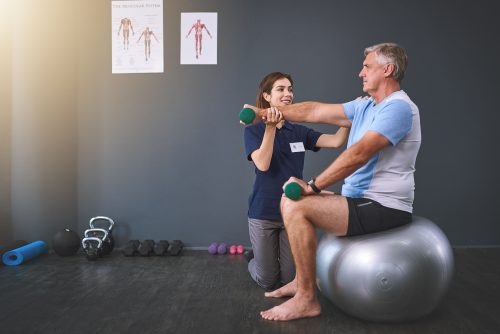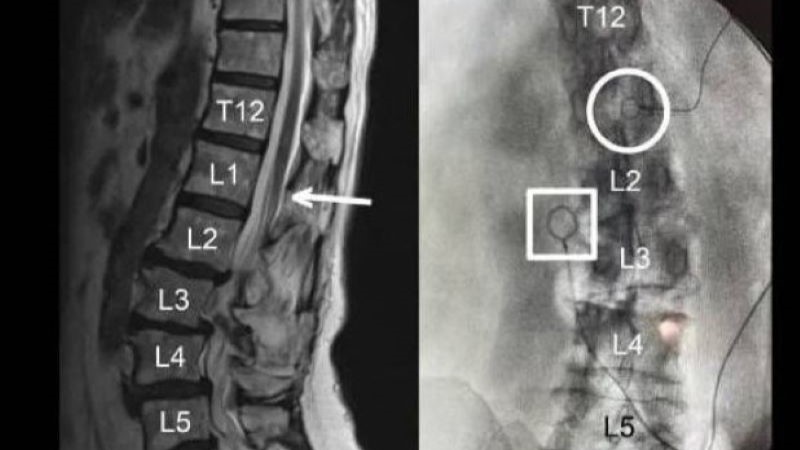
Patients who use early physical therapy as an alternative to or in conjunction with short-term opioid use to treat their pain may be less likely to use opioids in the long-term, according to new research.
The cross-sectional analysis evaluated health care insurance claims between Jan. 1, 2007, and Dec. 31, 2015, on 88,985 privately insured patients who reported musculoskeletal pain to an outpatient physician office or emergency department between Jan. 1, 2008, and Dec. 31, 2014. Patients were all opioid-naïve; between the ages of 18 and 64 years; and newly diagnosed with shoulder, neck, knee, or low back pain. Early physical therapy was considered attending at least one session within 90 days of relevant diagnosis (index date). The primary outcome was the use of opioids between 91 and 365 days from the index date.
For pain in the shoulder, neck, low back or knee, physical therapy can reduce the likelihood of #opioid use, a new study has found. https://t.co/Um08mIVKzE
— Stanford Medicine (@StanfordMed) December 18, 2018
Early physical therapy for musculoskeletal pain associated with lower amount of long-term opioid use. Well done Dr. Eric Sun! https://t.co/6pZTQF6Igs @JAMA_current @StanfordPain #chronicpain pic.twitter.com/Ua4aEuL81S
— Dr. Sean Mackey (@DrSeanMackey) December 18, 2018
The patients were 57.7% male and had a mean age of 46 years. Among the total cohort, 29.3% (n = 29,096) received early physical therapy, which was associated with significantly reduced odds of opioid use between 91 and 365 days of the index date for patients with shoulder pain (odds ratio [OR], 0.85; 95% CI, 0.77-0.95; P = .003), neck pain (OR, 0.92; 95% CI, 0.85-0.99; P = .03), knee pain (OR, 0.84; 95% CI, 0.77-0.91; P < .001), and low back pain (OR, 0.93; 95% CI, 0.88-0.98; P = .004). Patients who had early physical therapy but also used opioids had a significantly lower mean opioid use, as measured in oral morphine equivalents, for shoulder pain (−9.7%; 95% CI, −18.5% to −0.8%; P = .03), knee pain (−10.3%; 95% CI, −17.8% to −2.7%; P = .007), and low back pain (−5.1%; 95% CI, −10.2% to 0.0%; P = .046). The association with neck pain was not as significant (−3.8%; 95% CI, −10.8% to 3.3%; P = .30).
Early physical therapy associated with decreased opioid use for patients with neck, shoulder, back, or knee pain. https://t.co/QWXX5ynUpG pic.twitter.com/K8bKUpZwGj
— JAMA Network Open (@JAMANetworkOpen) December 18, 2018
Exercise is Medicine!!
Association of Early Physical Therapy With Long-term Opioid Use Among Opioid-Naive Patients With Musculoskeletal Pain. | Physical Medicine and Rehabilitation | JAMA Network Open | JAMA Network https://t.co/pX8V4CcZy2— Shannon Mitchel (@ShannonMitchel) December 18, 2018
“We asked ourselves, ‘How can we address the pain that people are having, while not increasing their risk of needing opioids?’” said study author Eric Sun, MD, PhD, assistant professor of anesthesiology, perioperative and pain medicine at Stanford. “And what our study found was that if you can get these patients on physical therapy reasonably quickly, that reduces the probability that they’ll be using opioids in the longer term.”
Tanezumab Proves Effective in Treating Hip and Knee OA
Surgical Invasiveness in Lung Cancer Treatment May Correlate with Later Opioid Use
Opioids Not Better for Long-term Back and Joint Pain
Trump Signs Legislation Aiming To Take On Opioid Crisis
Sources: JAMA, Stanford Medicine







 © 2025 Mashup Media, LLC, a Formedics Property. All Rights Reserved.
© 2025 Mashup Media, LLC, a Formedics Property. All Rights Reserved.